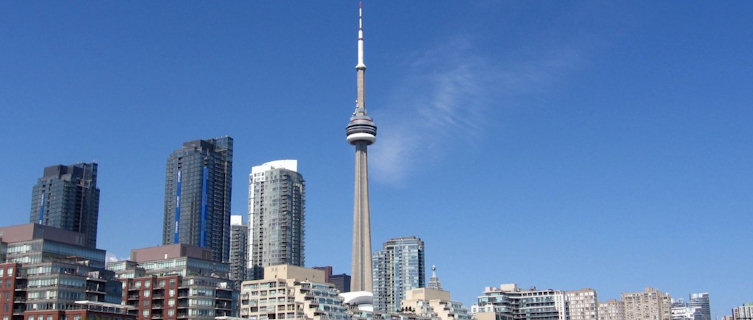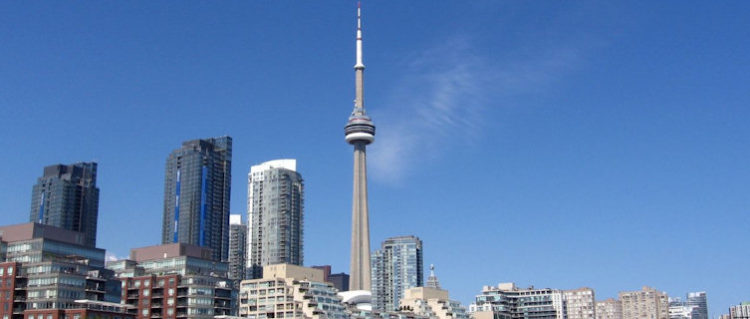Toronto City Overview
Toronto is sometimes referred to as the New York of Canada, and in fact it has a similar economic and cultural status as its counterpart in the neighboring country.
The metropolis is located on the north shore of Lake Ontario, and from the opposite bank you get a unique view of the city skyline with the CN Tower (the tallest free-standing structure in the world until recently) and the many sparkling skyscrapers.
Behind it lies the densely built-up city center with its green residential areas and parks on the steep slopes of the gorges that cut through the urban landscape. Toronto, the capital of the province of Ontario, is the largest city in Canada and the fifth largest in North America. The city is the heart of the country’s business and economy and the cultural center of English-speaking Canada.
Important facts
Area code: 416
Population: 2615060
Latitude: 43.648595
Longitude: -79.385331
Weather in Toronto
Toronto is a city with hot summers and cold, humid winters. Most tourists come from June to August, when the weather is mildest and numerous events take place. Particularly important events such as the Pride Week (end of June) and the Caribana (mid-July to early August) attract a particularly large number of visitors to the city and prices rise in line with demand. The best time to travel is in the off-season, when the temperatures are around 20 ° C and the queues at the popular tourist attractions are shorter. Those who are not afraid of the cold, the snow and occasional traffic outages can experience a fairytale time in winter, with Christmas markets, ice skating rinks and illuminated streets.
Toronto City History
Toronto was first taken over by the French in the 18th century, but did not become a real settlement until the American Revolutionary War, which caused hordes of British loyalists (United Empire Loyalists) to flee to the city. The place then known as York had an extremely English character and acted as the main administrative city of the English-speaking Upper Canada. In the 19th century, the place developed into a flourishing industrial center. In 1834 it was renamed in Toronto after the word of the Huron Indians for “meeting point”.
In the following 100 years, the city experienced a growth explosion. Driven by a combination of immigration, high birth rates and burgeoning industry, the population grew from 30,000 in 1851 to over 1 million in the 1950s. When a major fire in Toronto destroyed a huge area of downtown in 1904, the Torontonians simply rolled up their sleeves, rebuilt the city and let it thrive.
As the city continued to grow, it began to develop an impressive reputation for industry and commerce. A new sewage system was built to meet the growing population. The railroad came, connecting Toronto to the Upper Great Lakes and bringing more tourists to the city. Thanks to the mild laws, the distillation industry expanded until Toronto became the largest center of alcohol distillation in North America.
Apart from this excess, the 19th and early 20th century Toronto was a law-abiding city, where regulations were passed and rarely disregarded; the main interest was in making money. That is why Toronto got a reputation for being a conservative, boring stronghold of Protestantism, and that reputation still lingers on the city to some extent. Older citizens can still remember the days when the city came to a complete standstill on Sundays and you could only get wine in a few fine restaurants.
In the late 1950s, however, numerous immigrants brought new dishes, new languages and, above all, a new way of life to Toronto. Italians, Portuguese and Eastern Europeans came first, followed by immigrants from the Caribbean, Asia and India. This is how the city’s fascinating ethnic districts – Greektown, Little Italy and Chinatown – came into being. Toronto gradually developed a multicultural North American character and shook off its colonial identity, although remnants of it have survived, such as the English-style pubs and deep-seated habit, in conservative clubs and associations before dinner to say something to apply to the English Queen. The situation is similar with the architecture of the city: At first glance, it appears just like any other American city, albeit cleaner. On closer inspection, however, one discovers well-preserved Victorian and Edwardian buildings as well as countless English pubs.
Today’s Toronto is a lively, sophisticated city. Economically, it is Canada’s most important city – the country’s financial, media, and service center. More large companies are headquartered here than in any other major Canadian city. In the evening, residents can enjoy themselves in the numerous restaurants, bars and clubs or at a concert, in the opera or in the theater. But more than anything, Toronto is determined by its citizenship, who is friendly, efficient, and one of the most multicultural in the world.

